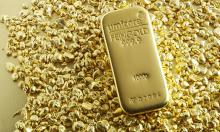New data on Martian atmosphere
Fifty astronomers collaborating as the Whole Earth Telescope project observed a white dwarf star using the Hubble Space Telescope and observatories around the world. They found that the star, the cinder of a burned-out "sun" 50 light years away, vibrates in a way that suggests its core is crystalline, probably carbon or oxygen, or both.
If it's pure crystalline carbon, it would be one staggeringly huge diamond. In a report submitted to the Astrophysical Journal Letters, the researchers rated the sparkler at 10 billion trillion trillion carats, report &to=https://www.baltimoresun.com' target=_blank>Baltimoresun.com
Mars’ brush with Earth in August - closest in 60,000 years - gave astronomers a peek into the Red Planet’s atmosphere that revealed why oxygen levels remain too low for humans to breathe.
The culprit, researchers are reporting today, is hydrogen peroxide - the stuff familiar on Earth as an antiseptic for cuts. Dr. R. Todd Clancy, who headed the research, in an interview described it as the first detection of hydrogen peroxide in the Martian atmosphere, and a landmark in understanding that thin shroud of gases.
"To a large degree, our measurement of hydrogen peroxide is a confirmation that we understand how the chemistry of the Mars atmosphere behaves," he said. "Unlike Venus, Mars is hospitable enough to be considered a possible human habitat in the future." "This is the first time that a chemical catalyst of this sort has been found in a planetary atmosphere other than the Earth’s," said Dr. Douglas Pierce-Price. He is with the Joint Astronomy Center in Hilo, Hawaii, which operates the 50-foot-diameter telescope. What about the possibility of short-circuiting hydrogen peroxide so that oxygen does build up, making Mars more habitable for humans?
Dr. Clancy noted that low oxygen is only part of Mars’ problem. Low atmospheric pressure is another. Even with more oxygen, Mars’ atmospheric pressure would be too low for humans to stroll the surface. Pressure would still be about 6 millibars, compared with 1,000 on Earth.
Anyone who ventured outdoors without a pressurized spacesuit would face death, as gases began to bubble out of their blood, he said, inform &to=https://www.toledoblade.com' target=_blank>Toledoblade.com
Guy Webster, a NASA Jet Propulsion Lab spokesman, said it was unlikely to alter the scientific missions carried out by rovers currently on the red planet. To detect the chemical, which was long theorized but never before confirmed, researchers had to be in the right place at the right time. The James Clerk Maxwell Telescope, perched near the 14,000-foot summit of a dormant Hawaiian volcano, is a sleuth that works in a slice of the light spectrum that boldly reveals the fingerprint of even trace amounts of hydrogen peroxide. The team pointed the scope into clear skies at midnight last summer, when Mars and Earth drew closer than they had been since Neanderthals ruled Europe.
Subscribe to Pravda.Ru Telegram channel, Facebook, RSS!




